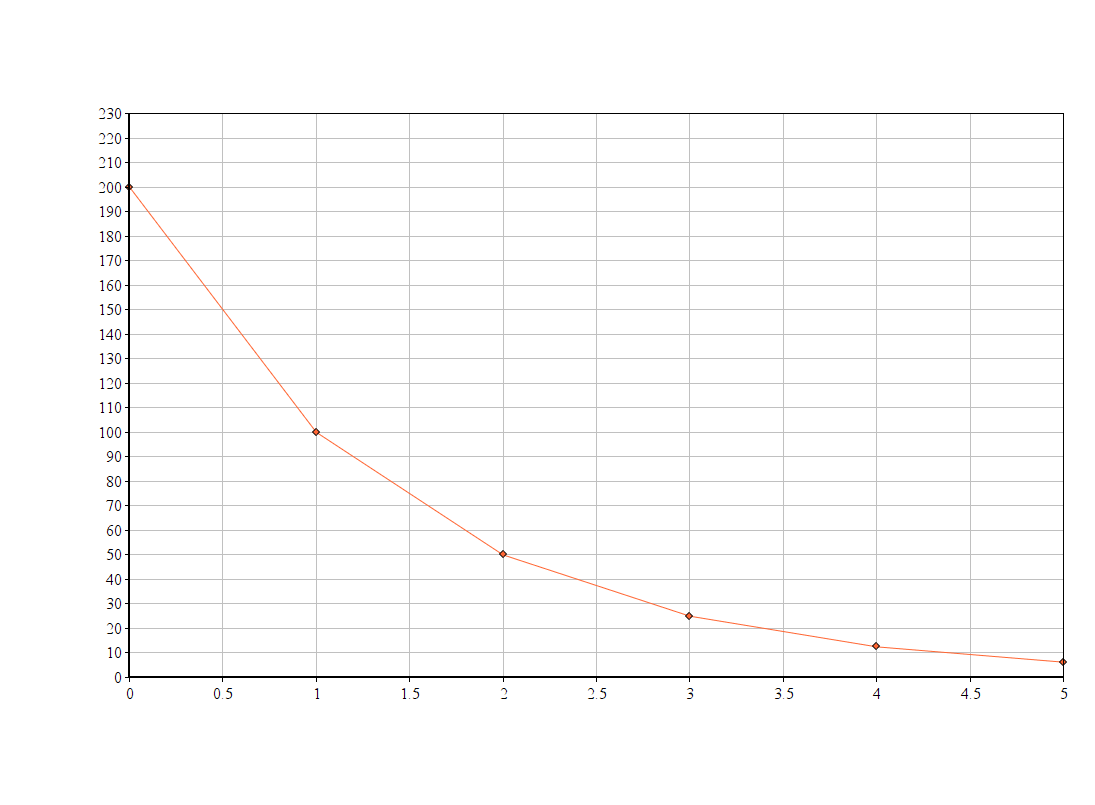Question #cc09c
1 Answer
The next number is 25.
The formula is
Explanation:
This is an exponential decay or half-life type of question. The number halves each time, so the number after 50 is 25.
The general equation for exponential decay can be expressed as
where
If the number sequence was 200, 50, 12.5, etc. we would use a base of 1/4 because the number is being quartered each time. The initial amount can also be any number, but in this case
Notice that we had to restrict the values that
The graph looks like this

The important thing here is that

